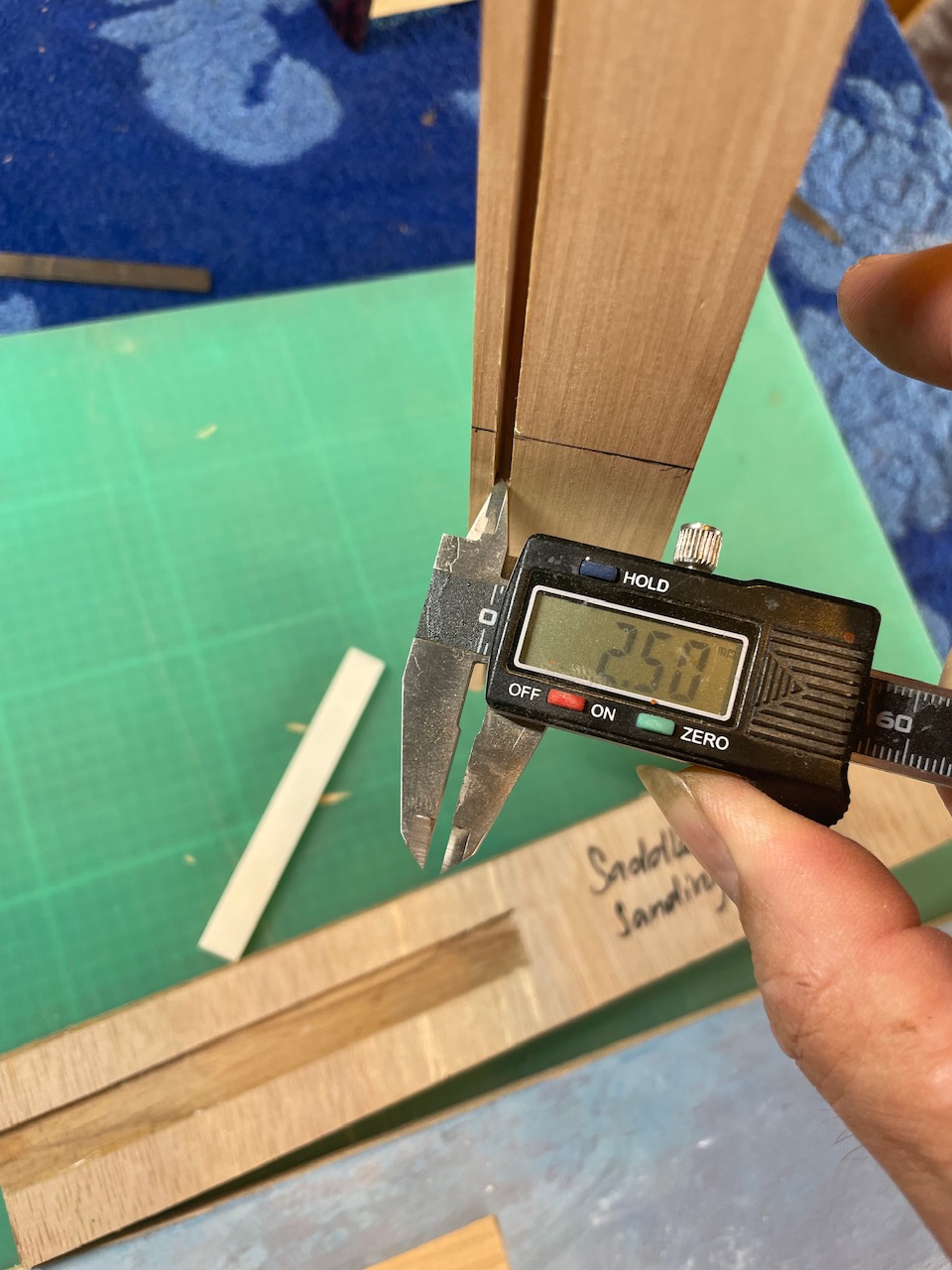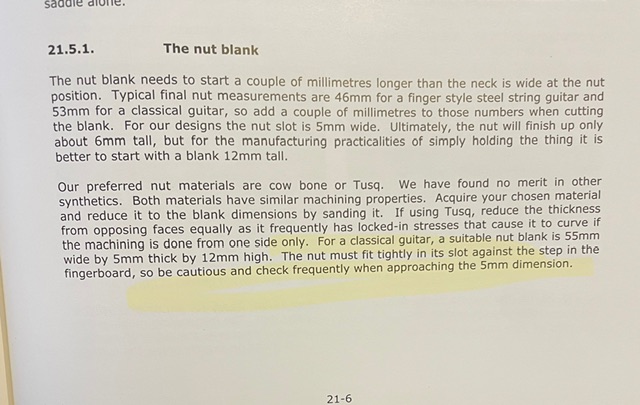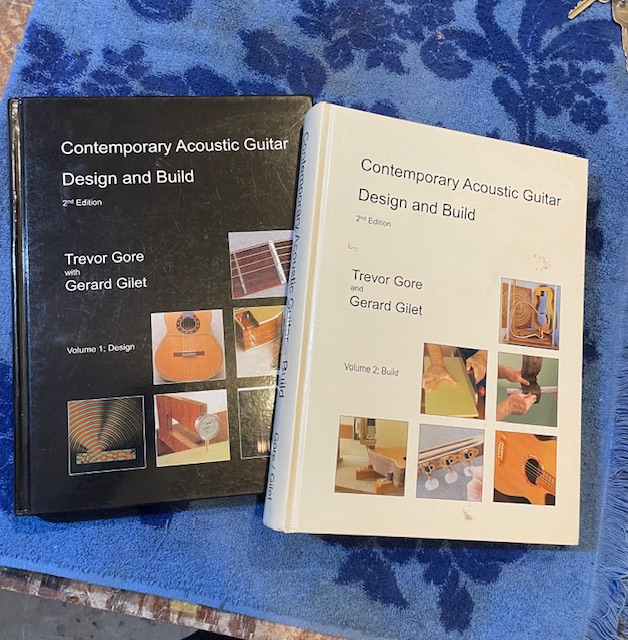|
Firefrets -> RE: burning Bridges, NUTS on fire and blazing Saddles~ (Oct. 15 2025 11:44:17)
|
Do bear in mind for context, that the above was a follow up response (not my first reply) to this question:
quote:
"I’ve had a 1970 Ramirez 1a Blanca for close to 40 years. If I remove all the strings and turn the guitar upside down the nut will simply fall out. Am I understanding that the guitar could improve significantly by simply having a new tighter nut made? I think it’s a great sounding guitar as is."
The person who asked the question was concerned that his nut would fall out without strings, and wondered if the nut was replaced by a tight fitting nut, if improvements to the guitar would follow.
* That's not necessarily the same thing as "How nuts and saddles should fit to be most effective".
However, every instrument is different. The term 'tight' can be misleading. On a classical guitar, many builders don't glue the nut in place. They often try to cut the nut so that it sits flush in it's respective slot.
The torque of the strings is enough to keep it in place for the classical player.
However string tension alone would not be enough to keep a steel strung guitar nut in place, particularly if you are bending strings, such as on an electric guitar etc.
My advice to the person who asked the question would be to place a few tiny dots of wood glue on the nut and secure it against the end of the fretboard, which in turn would stop the problem of the nut falling out.
Of course, if the nut is greatly undersized, or isn't sitting flush, that's a different scenario, but without inspecting their guitar it's difficult to decide if any gains could be made.
My first instinct is that if the nut has good contact with the floor of the slot, and the end of the fretboard, then it isn't too important whether or not it is tight against the headstock plate also. There is very little energy at the nut end.
I'd be inclined to state that no noticeable difference to tone, or volume, would be detectable, by swapping the nut out for one that is tight against all 3 faces.
On many instruments, there is no headstock plate. A violin is a perfect example.
Flat against the floor, and flat against the fingerboard is priority for me.
You also have to consider that wood expands and contracts, as does bone, depending on the elements. If you were to have anything 'too tight' a fit, then it would be nonsensical. I've had to cut nuts and saddles out in the past that were so tight it would risk damaging the guitar if one were to forcefully pull, or knock them out.
|
|
|
|



